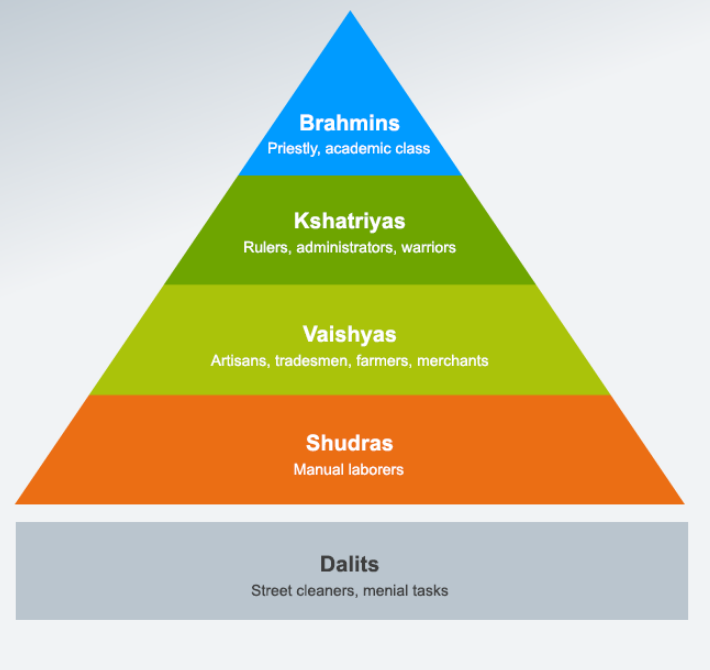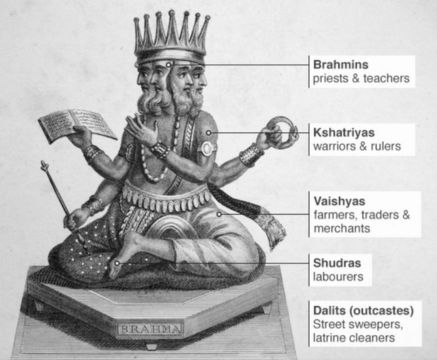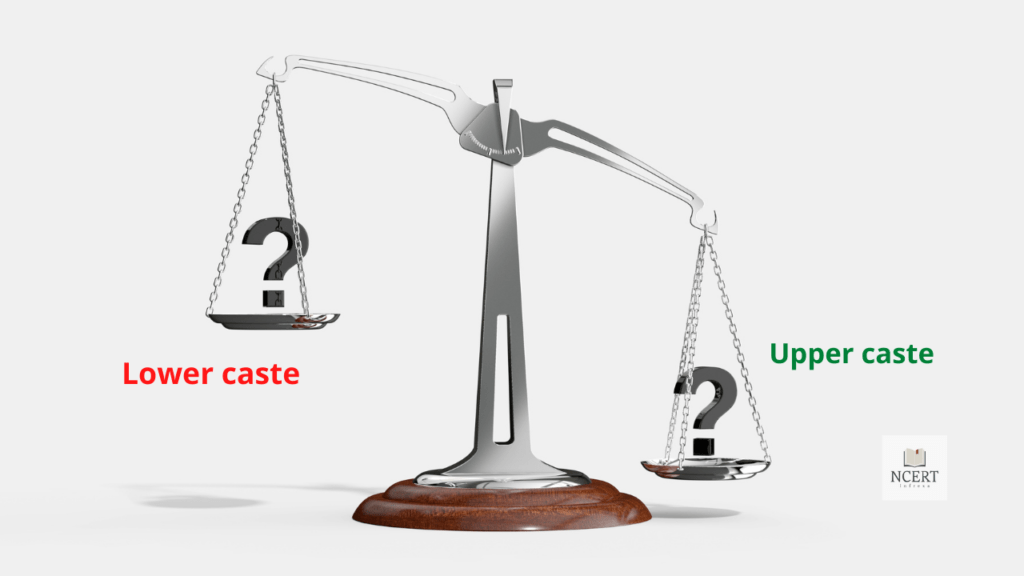Casteism, deeply rooted in India’s social fabric, continues to pose a significant challenge to achieving true equality and progress. This article explores the complexities of casteism, its historical context, and its pervasive impact on Indian society.
By understanding the issue and discussing potential solutions, we can work towards a more just and inclusive future for all.
Casteism Meaning and Impact
Casteism, also known as Jatiwad, is a detrimental practice that perpetuates a sense of superiority within a specific caste, fostering hatred towards members of other castes. The prejudice is done against a person or community on the grounds of inherited caste identity.
This system, though officially abolished, maintains its influence through social norms, prejudices, and even political manipulation.
Impact of Casteism
Casteism poses several barriers to national development due to its negative impact on various aspects of society and governance. Here are some ways in which casteism hinders national development:
- Social Division: Casteism perpetuates social division and discrimination, leading to the marginalization of certain groups. This division weakens social cohesion and impedes collective efforts toward national development.
- Economic Disparities: Caste-based discrimination often results in economic disparities, limiting access to education, employment, and entrepreneurial opportunities for certain castes. This economic imbalance hampers overall economic growth and development.
- Violence and Social Unrest: Caste-based discrimination often manifests in violence and interpersonal Tensions, ranging from individual atrocities to communal clashes. Such violence disrupts social harmony and creates an atmosphere of fear, hindering overall peace and stability necessary for sustainable development.
- Exploitation and Forced Labor: It can lead to the exploitation of individuals from lower castes, subjecting them to forced labor and inhumane working conditions. This exploitation not only violates human rights but also impedes economic productivity and development.
- Educational Inequality: Caste-based discrimination affects educational opportunities. Lower-caste individuals may face barriers to quality education and fair treatment in academic institutions, limiting their potential contributions to national progress. This disparity in educational attainment undermines the development of a skilled and knowledgeable workforce.
- Occupational Restrictions and Corruption: Caste-based discrimination influences occupational choices, with individuals from lower castes facing restrictions in pursuing certain professions. This limits the diversity and efficiency of the labor market, hindering overall economic development. It can indirectly lead to corruption. When people favor those from their own caste and give them special benefits, they might engage in dishonest and corrupt practices.
- Political Fragmentation: Caste-based politics can lead to fragmentation along caste lines, affecting political stability and governance. When political decisions are influenced by caste considerations rather than merit, it hampers effective governance and policy implementation.
- Social Welfare Challenges: Casteism can complicate the implementation of social welfare programs. Allocation of resources and benefits may be influenced by caste considerations rather than actual need, leading to inefficiencies and unequal distribution.
- Lack of Unity: Caste-based divisions erode the sense of national unity. For a country to progress, a united front is essential, and casteism creates internal divisions that undermine collective efforts for development.
- Inefficient Resource Allocation: Caste-based considerations may influence resource allocation in ways that are not aligned with developmental priorities. This inefficient allocation can hinder infrastructure development, healthcare, and other critical sectors.
Renowned thinker Chandan Singh Virat aptly describes casteism as a “serious mental depravity,” negatively influencing one’s thoughts, feelings, and actions towards other castes.
Origins of Caste System
The caste system has, fundamentally, originated in ancient India around 3000-4000 years back. In this system, the Hindus were divided into 4 rigid hierarchical groups based on their work/occupation. This work was prominently translated as the term “karma“, however, over the time, the casteism was deeply ingrained based on birth.

Within this system, there were four primary castes: Brahmins (priests), Kshatriyas (warriors), Vaishyas (merchants), and Shudras (laborers). An additional group, the Dalits (formerly known as “untouchables”), resided outside this system and faced extreme marginalization.
Spread of Casteism through Dharma
Casteism began to spread widely soon after it gained the backing of the Manu Laws (Institutions of Manu). Manu, a Hindu Brahmin who claimed to be the first son of Brahma, authored the highly criticized book Manusmriti.
In this book, he classified Hindus into four categories – Brahmanas, Kshatriyas, Vaisyas, and Sudras – by analogizing them with the various organs of Brahma, one of the major deities in Hinduism.

Manu publicized his Manusmriti as the “Manava-Dharma-Shastra” and imparted the force of Dharma to casteism. In this book, he acknowledges and justifies the caste system as the foundation for order and regularity in society.
Despite its popularity, the Manusmriti is widely considered one of the most controversial books, promoting social prejudice in the justice delivery system. Brahmanas and Kshatriyas were granted paramount privileges when awarding punishment for misconduct, while Sudras were given the least privileges but faced the harshest punishments, even for less severe contraventions or offenses.
The Manusmriti faces global criticism for justifying the oppression of women and the suppression of lower castes, thereby contradicting the constitutional principles of the country. It violates the Right to equality guaranteed by the Constitution of India under Articles 15, 16, and 17.
Spread of Casteism Through Education
According to the Manusmriti or Manav Dharm Shastra, Brahmins were positioned at the top of the hierarchy, with their primary profession being teaching and imparting academic and intellectual knowledge to the people.
Brahmins who fervently believed in and accepted the Manusmriti as their ideal or guide contributed to the propagation of caste-based disparity in society through their academic institutions. They prohibited individuals from lower castes from accessing education and engaging in professions with high dignity.
Spread of Casteism through Politics
Political leaders indirectly contribute to the perpetuation of casteism by prioritizing their own caste affiliations over the broader national interest. For Example:
- Caste-based Parties: Parties like the Justice Party, Kerala Congress, DMK, and BSP represent specific caste identities, solidifying caste lines and potentially neglecting interests outside their core groups.
- Pressure Groups: Associations like the Nadar Association and Kshatriya Mahasabha lobby for benefits based on caste, further entrenching caste consciousness.
- Ticket Allocation: Political parties often select candidates based on caste calculations, marginalizing individuals based solely on their birth.
- Cabinet Formation: Caste considerations in ministerial appointments can hinder meritocratic governance and reinforce the perception of power politics being driven by caste.
- Caste Conflicts: Violent clashes between upper and lower castes or dominant castes highlight the deep-seated social tensions exacerbated by political dynamics.
- Misguided Protests: Opposition to reservation policies by small groups like Sapaks Party India, while highlighting potential challenges, can be counterproductive and further divide communities.
Causes of Casteism
Casteism still prevails in some territories of India. While recognizing its detrimental effects is crucial, understanding the root causes is essential for dismantling this oppressive system. Here’s an exploration of some key contributing factors:
Historical Roots:
- Ancient texts: The ancient concept of Varna, found in Hindu scriptures, classified individuals into social classes based on occupation. While originally flexible, it solidified over time, becoming rigid and hereditary, determined by birth.
- Colonial legacy: The British Raj implemented policies that solidified and even exacerbated caste divisions for administrative purposes, further entrenching the system.
Socio-economic factors:
- Economic inequality: Caste often aligns with economic disparities, with upper castes controlling resources and opportunities denied to lower castes. This perpetuates a cycle of poverty and reinforces societal hierarchies.
- Lack of education and awareness: Limited access to education, particularly for lower castes, restricts upward mobility and reinforces traditional beliefs that justify the caste system.
- Occupational segregation: Traditional occupations associated with castes restrict individual choice and limit social interaction, hindering social mobility and understanding.
Psychological factors:
- Social identity and belonging: Caste provides a sense of identity and belonging, especially for dominant castes. However, this reinforces group divisions and justifies discrimination against others.
- In-group bias: The tendency to favor one’s own group can lead to prejudice and discrimination against those from different castes.
- Fear of losing status: Dominant castes may fear losing their privileges if the system changes, leading them to actively defend the status quo.
Political factors:
- Vote bank politics: Politicians often exploit caste identities to secure votes, solidifying divisions and hindering broader development agendas.
- Lack of effective enforcement of anti-discrimination laws: Insufficient implementation of laws promoting equality weakens efforts to combat casteism.
- Inadequate representation of lower castes: Limited representation in political spheres weakens the voice of marginalized communities and hinders policy changes.
The most negative aspect of casteism in the world
We know people from different castes live together in a society. It is a fact that there could be a probability of developing a sense of superiority in a particular group or class of people with a lack of proper ethical sensibility. The most negative aspect of casteism can be found in Indian history.
Self-centric people often tend to rely on unfair practices and try to establish dominance over another class or group of people, creating a false impression in society. People belonging to minority or weaker sections are then exploited or oppressed by these self-proclaimed superior classes. This exploitation gives birth to discrimination and social prejudice, which is often referred to as casteism.
Generally, different castes have their own customs, dress, food, and language, and this diversity reveals the differences between them. The problem arises when people of each caste start giving too much importance to their own culture, considering their traditions to be paramount. This is another main cause of casteism. Even in the modern era, incidents of casteism are still prevalent in society.
Initially, it was observed that the Brahmin caste was given the topmost position, followed by Kshatriya, Vaishya, and then Shudra. Rural communities were arranged in a hierarchy primarily based on caste. The upper or superior caste always lived in segregated areas far from the lower class.
The lower caste has been deprived of education, suppressed, exploited, and subjected to atrocities. Water wells were not shared with them, and their entry into temples was completely banned. A person from the lower class was not allowed to touch anything belonging to the upper caste, and they did not have the right to use public places or sit in a chair in front of a person belonging to the upper caste.
In addition, Brahmins would not accept food or drink from the Shudras, and one could marry only within one’s caste. In this way, the life of the lower caste was restricted within a line of control regulated by the upper caste. The lower caste has no equal rights compared to the upper caste.
Casteism is considered the most dreadful social evil that should not be given any place in society. It works to divide society and break the integrity of the nation, representing a significant blot on modern civilized society.
Casteism Practice in Modern India
Unlike a civilized society where merit and individual personality are given importance, Indian society gives more preference to Jati or the caste.
Indians still often identify themselves by their Caste or Jati they belong to and caste is still a major factor in marriage selection. If we go to remote areas we witness casteism at the grass-root level. People of the lower class are still not treated with quality.
In India, casteism is given a prominent place in every election, each party tries to cast votes in its favor on the basis of caste. In Indian history, caste is given an important place from the very beginning, people have been divided on the basis of Brahmin, Kshatriya, Vaishya, and Shudra from the beginning. At present, discrimination is done on the basis of caste.
We see a social disparity almost in every state in India, where the election tickets are still allotted to a contestant by taking the caste-based majority of voters into account. For, instances in the Uttar Pradesh elections, Yadav votes are made an issue on the basis of majority. Similarly, Patels are targeted in Gujarat and representatives are also selected keeping in mind the people of the multi-caste.
Despite the above, India is a country with a huge population, people of different castes and religions live together in India, and many variations are seen in this caste, customs, dress, food, and drink. The practice of casteism is less seen in developed states of India than in backward states like Bihar, Odisha, Jharkhand, Rajasthan, Madhya Pradesh, Andhra Pradesh, and so on.
The Legality of Casteism in India
Cateism is against the ideals of the Indian constitution and broadly violates equality rights as guaranteed by it under articles 15, 16, and 17.
Under article 17 of the Constitution, untouchability is abolished and its preaching and practice in any form is forbidden `in India. Now untouchability (Under Untouchability (Offences) Act, 1954) is a serious offence punishable for a term exceeding 2 years with a fine in accordance with the law.
For the removal of doubts, it is necessary to mention that Untouchability (Offences) Act, 1954 was amended in 1976 and renamed “Protection of the Civil Rights Act“.
It is a bad practice that has no legal force behind it therefore we can say that the present status of casteism is totally illegal and unconstitutional in India.
Casteism is organically associated with communalism. It hinders the process of national integration by ignoring human values and social welfare spirit within and beyond the border of the country. It does not only play a detrimental role in elections but also harms the democratic spirit of the Nation.
Laws, articles, and provisions that deal with it
Below are the initiatives of India to remove the practice of casteism in the country.
- In Part III of the constitution under “Fundamental rights”, the Right to equality was given to the Citizens of India. Basically, Articles 15, 16 and 17 are the articles that deal with casteism in India.
- Various other initiatives were taken into account in which “Abolition of untouchability” was one of the major steps to remove the casteism and untouchability in India.
- The Protection of Civil Rights Act, 1955 was introduced and through it, the constitution of India legally abolished the practice of untouchability in the country.
- Scheduled Caste and Scheduled Tribe (Prevention of Atrocities) Act, 1989 also came into force to prevent the practice of discrimination in the country.
- Provision and concept of reservation in education and employment were also given to ensure equal opportunities and to maintain a fair representation of backward classes in educational institutes, Politics, and Public offices.
- National Commission for Scheduled Castes and National Commission for Scheduled Tribes was constituted to take take the affirmative approach and protect the interests of the members belonging to sc/st communities.
- Provisions of the Ambedkar Scheme under The Special Marriage Act, of 1954 made and the promotion of inter-caste marriage (Roti-beti sambandh) is also being done by many states to bring families of two different castes closer to each other.
Way forward
We are witnessing gradual positive changes. Scholar M. N. Srinivas termed this mobility in the caste system as ‘Sanskritization.’
To ascend in this process, a lower jati often adopts the habits and behavior patterns of the upper caste or Ucch jati in the area. This may involve changes such as adopting a new name, surname, or lifestyle resembling that of a higher jati, embracing vegetarianism and culture, observing more orthodox religious practices, building a temple, and adopting a more conservative approach towards treating women, among other things.
Apart from that, numerous collective initiatives were taken by the Government and Private stakeholders, to get rid of the practice of casteism, in this context, a gradual positive impact can also be seen in society, however, it needs still some extraordinary efforts and solutions to eliminate this Jatiwad completely from society like –
- Providing value-based education to children from childhood can mitigate the problem of casteism to some extent.
- Various social agencies like families, schools, and Mass media must be given the moral responsibility to develop a proper, broad outlook among children, that will negate the feelings of casteism, such as creating awareness about the ill effects of preserving the traditional caste system and so on.
- Object-oriented literary programs must be driven up in rural areas as the caste feelings, which further perpetuate casteism and untouchability, are more prevalent in rural areas. These feelings of casteism can be reduced by the provision of social education among the rural population.
- By encouraging roti-beti sambandh / inter-caste marriages, the feelings arising out of casteism can be weakened as these marriages attains the objectives of social integration and bring two families of different castes closer to each other.
- The provision of social, cultural, and economic equality among different sections of society reduces the potential possibility of jealousy and competition. Thus, economic and cultural equality can play an important role in eliminating casteism.
- According to V. K. R. V. Rao, in order to put an end to casteism and deprive it of its very basis, the creation of some optional groups is necessary through which the communal tendencies of the individuals can be manifested and organized. As these increase, casteism decreases because the individuals will have the chance to express their instincts and motives outside the caste.
Apart from the above, every country should avoid the effects of casteism, only then they can protect their sovereignty and become a developed financially and socially strong nation.




